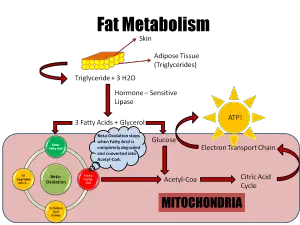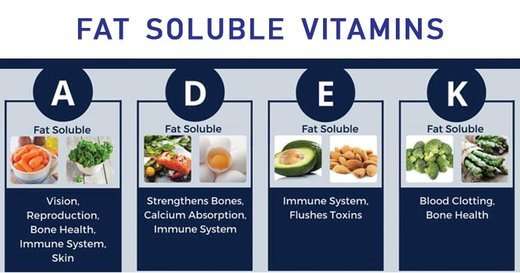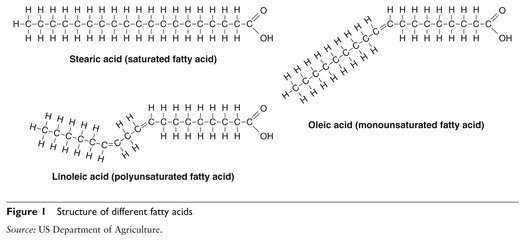Dietary Fat vs. Bodily Fat
Hang around the culinary world long enough and you will hear a catchy saying: “Fat is Flavor”. That saying has a good basis. Without fats, our food is incredibly bland and boring. However, fat does far more for us than simply make our food taste good.
While fat is so often demonized, it is a nutrient like any other; and it serves our body in important ways. Moderation is still the name of the game, but we need different fats in our lives and diets to stay strong and healthy.
Let’s explore a little more about fat and how it works. Then we can figure out what to eat in order to get the benefits – and not the extra pounds – from this tasty, high calorie source.
What role does it play?
In a world where everyone wants less of it, there is very little conversation about the role of fat and why we need it. Keep in mind that fat is an incredibly energy dense food-source that can provide our bodies with a lot of calories. While many people count calories, remember that calories = energy. So, in one sense fat is simply an energy source and nothing more, but it is a bit more complicated than that.
Dietary fat is one of the three macronutrients our bodies need to survive. These “macros”, fat, protein and carbohydrates, all deliver different vitamins, nutrients, and energy units. Everything that we consume contains differing ratios of these macros. Cheese is mostly fat, for example, while chicken is most protein.
Bodily fat plays an important role insulating us and keeping our body heat in to protect us from the cold. It operates much like a winter jacket, just under our skin. We can also thank bodily fat for keeping our internal organs sheltered, safe and relatively “shock-proof”, as a sort of padding between our vital organs. These fat layers cushion our insides from damage when our bodies fall or sustain intense impact. As yet another function, fat provides a sort of reserve energy. Without those reserves, we would keel over unconscious every time we our stomachs got empty and our glucose levels dropped.
In short, thank you, fat!
What is “Fat”?
Talking about fat, the nutrient, is different than talking about fat, the cell.
The nutrient fat is a chemical compound that is ingested and digested in foods like potato chips and avocados as well as fatty fish like salmon, trout, and tuna or red meats like beef.
Fat cells are a different ball game. They are the portions of ‘you’ that insulate and protect you and your organs in various situations or provide you energy when you haven’t eaten in awhile.
First, let’s take a look at what fat the macronutrient is, and the difference between the so-called “good fats” and “bad fats”.
Fat: Energy
Fat is a chemical compound made up of carbon and hydrogen atoms, strung together in a long chain. How the atoms are strung together determines what type of fat they are. These chains are “hydrophobic”, and repel water. Oil (a type of fat) and water don’t mix, after all, and these fats (lipids) form the barriers your cells use as walls.

Adipocytes (fat cells) are what the body uses for energy. Triglycerides are stored within adipocytes. When the body runs low on fuel, these triglycerides are pulled out of the adipose cells. Once removed, they are broken down into glucose for fuel. A collection of these adipocytes make up adipose tissue, which is what most people think of when they hear the term ‘fat.’
Nearly 50% of our bodies energy comes from fats. In fact, fats contain more energy per gram than carbohydrates or proteins; 9 calories per gram for fat vs 4 calories per gram for carbs and protein. Everytime you hit the gym on an empty stomach, you can pat your body and thank your fat reserves for giving you the power to run, lift and breathe.
Fatty Acids
As we digest a tasty, fatty meal, the dietary fat we consumed is broken down into smaller parts called “fatty acids”. These fatty acids float into our bloodstream and are scooped up by hungry cells. They are then burned like coal in a fireplace. The fatty acids that we don’t need immediately are wrapped up into bundles called “triglycerides” that we talked about above and stored in adipocytes for future use.
Our bodies love storing fat, because historically it was insurance against the future when food may not be so highly available. Today, these fabulous fat-storing skills can result in stubborn chub that doesn’t seem to melt away.
Need some help?
Shape Success, Live Exceptionally
Hit that button, and get started today.
Fat-Soluble Vitamins

Beyond storing energy, fat serves a critical function in our bodies – it is a transport system. Some of the vitamins that we need to survive (Vitamin A, D, E, and K) are fat-soluble. This means that they only dissolve in fat, not water.
In order to digest these vitamins, they must be piggy-backed onto some fatty acids in order to make it into our bloodstream. These vitamins are also stored in the adipocytes our bodies carry around, which makes them uniquely susceptible to overdose.
While any excess water-soluble vitamins are simply expelled when we hit the bathroom, fat-soluble vitamins remain trapped within our fat cells. They should be taken with attention and care.
Good Fats and Bad Fats
In the world of ‘fats,’ there are the good ones, and bad ones. Obviously, we want to limit our intake of bad fats and focus on consuming the good fats.
An easy well to tell the difference between these the fats we want to consume and the ones we want to avoid as much as possible is by checking consistency. “Good” fats are liquid at room temperature, like oil and margarine. It’s easy to rattle off a list of the foods containing the good fats: avocados, fish, nuts, eggs.
“Bad” fats are solid at room temperature, like butter and animal fat. The foods heavy with bad fats are of course the salty, tasty ones: chips, cheese, meat, and basically anything fried. However the details of what makes a fat “bad” are slightly more complicated.
The Bad: Trans Fats
Trans fats are a human-made fat compound created to increase the shelf-life of different products; make oils into solids (think vegetable shortening); and to prevent the fat within foods from going rancid. These types of fats are the unsaturated types, such as oils, that are put through a process called “hydrogenation”. In this process, extra hydrogen is added into the fat, creating an artificially saturated fat. Remember, saturated fat occurs when all of the carbon atoms have a full eight hydrogens.
These trans fats are by far the worst fat you can eat, leading to increased risk of heart disease, inflammation and diabetes. Trans fats are most often found in heavily processed foods. Although they are technically banned, they can still be found in various foods due to how the regulations are written.
The in-between: Saturated Fat
Saturated fat lies somewhere in between good fats and bad ones. Depending on who you ask, they can be either just as bad as trans fats or intermediate, lying somewhere in between.
The term “saturated” refers to the carbon atoms in the fat. If you remember, fat is made up of both carbon and hydrogen: each carbon atom can bond with eight hydrogen atoms.

When all of the carbon atoms are bonded with a full eight hydrogen atoms, the fat is saturated. Saturated fats are considered dangerous because, like evil trans fats, they can raise LDL (bad cholesterol) levels. This cholesterol is what sticks in arteries, leading to potential heart disease. However, that isn’t quite as cut and dry as people make it out to be, either.
Saturated fat is found in red meats and cheeses. These are foods that doctors recommend limiting. The current accepted level is to keep saturated fat intake below 10% of your daily calorie intake.
The Good: Monounsaturated Fats
The (as of now) undisputed good stuff! These fats have one junction with a single (thus the term “mono”) double carbon bond. This carbon-carbon bond leaves less space for hydrogen atoms to bond with the carbon atoms.
These fats, found in oils, are healthier. Monounsturated fats are the main reason that cultures who favor oils over butter, such as the olive-oil heavy Mediterranean diet, experience lower rates of heart disease.
While calorie dense, monounsaturated fats have a low risk for future health complications.
The Good: Polyunsaturated Fats
If you guessed that polyunsaturated fats have even less hydrogen, bingo! This type of fat has more than one carbon-carbon bond, resulting in even fewer hydrogen atoms bonded to our carbons. Polyunsaturated fats are especially important because our bodies need them to function. However, we cannot produce them, so we need to get these fats from foods.
The main “essential” fats, omega-3 and omega-6 are important to maintain cell function, insulate nerves, clot blood and form cell-membranes. These fats are a vital part of a healthy diet and can be obtained from sunflower oil, walnuts and soybeans as well as fish.
Fat Cells
After we eat, these four types of fats are digested and absorbed into our bloodstream to be burned or packed into our fat cells. These fat cells, or adipocytes, grow or shrink based on the amount of fats they store. This is what we consider ‘bodily fat.’
Fats are packed into these cells. At a certain point the cell can no longer store any more triglycerides and will split off to form a new fat cell.

Triglycerides are removed from these cells when we get hungry and don’t eat anything. When this happens, our blood sugar drops and our bodies spring into action. The triglycerides our bodies take out of the adipocytes are then taken and burned to provide us with the energy we need to keep moving.
When we experience weight loss or weight gain, the size of our fat cells often change more than the number of total fat cells we have. Losing weight is a gradual emptying of each fat cell as fatty acids are reabsorbed into the bloodstream. Likewise, gaining weight in this particular case entails filling up each adipocyte; and occasionally splitting them apart to create more storage space.
Fat: The Facts
To sum it all up, both, dietary and bodily fat is important because of how they impact the body. Individually, they store energy, cushion our organs, keep us warm, and deliver fat-soluble vitamins, omega-3 and omega-6 fatty acids exactly where they need to be.
While the amount of fat we consume is important, the types of fat that we consume are even more vital to keep an eye on. Sticking to a balanced diet with a variety of healthier fats, and avoiding trans fats, is an important part of staying fit, healthy and strong.
Now that you know how vital fats truly are, stay away from low to no fat diets. Instead, focus on getting enough of the healthier fats in your diet.
Let Us help You Out
At CONDITIONerd we are here to help you achieve better physical and mental health through exercise. Check out the plans we offer to our customers and see if you could benefit from working with our team. And if you have questions, you can always contact a CONDITIONerd team member.
Personal trainers, like those found here, can help guide you on your pathway towards reaching your fitness goals, whether that is getting bigger, stronger, faster, more lean, or just generally feeling better.
We can get you setup with a periodized workout plan, supplement information, and advice on nutrition to help you reach your goals.
The only thing you need is some motivation and a willingness to change some old habits.
Get into contact with us to find out what membership is right for you. In a CONDITIONerd program, you’ll be surrounded by others who can help you to get where you want to be.
Generally, our clients start to see some pretty awesome changes in 2-3 months time, some sooner.

